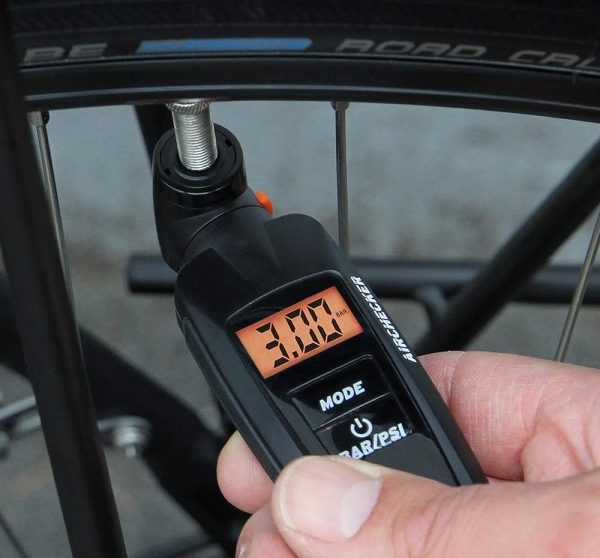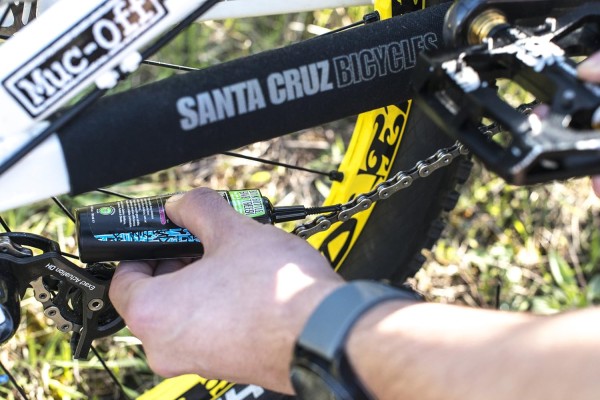After a soggy spin on your trusty two-wheeler, it’s time to take care of your prized possession. Don’t let the rain dampen your spirits or your bike’s performance! There are seven essential steps you should follow to ensure your ride stays in top-notch condition. From inspecting for damage to maintaining the chain, these post-rain rituals will keep your bike running smoothly and extend its lifespan.
So, grab a towel and get ready to show your bike some love. Get into the habit of completing these tasks after every rainy ride, and you’ll be rewarded with a bike that’s always ready to hit the road, rain or shine.

7. Inspect Your Bike for Damage
After every rainy ride, you should inspect your bike for any potential damage. Rain can be harsh on your bike’s components, so it’s important to take the time to check for any issues.
- Start by examining the frame for any signs of corrosion or rust.
- Look closely at the brakes and ensure they’re functioning properly.
- Check the chain for any signs of wear or stretching, and make sure it’s properly lubricated.
- Inspect the tires for any cuts or punctures and check the pressure as well.
- Don’t forget to examine the gears and shifters for any misalignment or damage.
6. Clean Your Bike Thoroughly
To thoroughly clean your bike after a rainy ride, use a gentle bike-specific cleaner to remove dirt and grime from its components. Follow these steps to ensure your bike is clean and ready for your next ride:
- Start by rinsing your bike with water to remove any loose dirt and mud. Use a hose or a bucket of water and a sponge to gently scrub the frame, fork, and wheels.
- Apply the bike-specific cleaner to a soft brush or cloth and scrub all the components, including the chain, gears, and brakes. Pay extra attention to areas with accumulated dirt.
- Rinse the bike again with clean water to remove any remaining cleaner. Dry your bike thoroughly with a clean cloth or allow it to air dry. Take the time to inspect your bike for any signs of damage or wear.
5. Dry Your Bike Properly
To ensure your bike is free from moisture and protected from rust, it’s important to dry it properly after a rainy ride. Start by using a clean microfiber cloth to wipe down the entire bike, paying special attention to the frame, handlebars, and wheels. Make sure to remove any standing water and gently dry all the nooks and crannies.
Next, use compressed air or a soft towel to dry the drivetrain components, such as the chain, derailleur, and cassette. This will prevent moisture from causing corrosion and ensure smooth gear shifting. Finally, allow your bike to air dry in a well-ventilated area, avoiding direct sunlight if possible. Taking these steps will help maintain the longevity and performance of your bike, even after a wet ride.
4. Lubricate the Moving Parts
Make sure to oil up the moving parts of your bike after every rainy ride. This is an essential step in maintaining your bike’s performance and preventing rust and corrosion.
Here are three important parts to focus on:
- Chain: Apply a generous amount of chain lubricant to ensure smooth movement and prevent rust. Wipe off any excess oil to avoid attracting dirt and debris.
- Derailleurs: These components are prone to rust and wear. Apply lubricant to the pivot points and joints, ensuring they move freely and smoothly.
- Brake and shift cables: Rainwater can cause these cables to become stiff and less responsive. Apply a small amount of lubricant to the cables and work it in by shifting through the gears and squeezing the brakes.
3. Check and Adjust Your Brakes
Check and adjust your brakes to ensure optimal stopping power and safety after every rainy ride. Riding in wet conditions can cause your brake pads to become wet and less effective, increasing the risk of accidents. Start by inspecting your brake pads for any signs of wear or damage. If they’re worn down or damaged, replace them immediately.
Next, check the brake cables for any signs of fraying or stretching. Adjust the tension if necessary to ensure the brakes engage smoothly and quickly. Additionally, make sure the brake levers are properly aligned and functioning correctly. Finally, test your brakes by gently applying pressure and ensuring they bring your bike to a complete stop.
2. Examine and Maintain Your Chain
After every rainy ride, take a moment to inspect and care for your chain. Riding in wet conditions can cause dirt and grime to accumulate on your chain, leading to decreased performance and potential damage.
Here are three essential steps to maintain your chain:
- Clean: Use a chain cleaner or a soft brush with a degreaser to remove dirt and debris from the chain. Ensure that every link is thoroughly cleaned.
- Lubricate: Apply a high-quality chain lubricant to ensure smooth movement and protect against rust. Be sure to wipe off any excess lubricant to prevent attracting more dirt.
- Check for damage: Inspect the chain for any signs of wear, such as stretched links or damaged rollers. Replace the chain if necessary to prevent further damage to your drivetrain.
Regularly examining and maintaining your chain will extend its lifespan and keep your bike running smoothly.
1. Store Your Bike in a Dry Place
To ensure the best protection for your bike, store it in a dry location after each rainy ride. Moisture is the enemy of your bike, causing rust and corrosion that can damage its components. Find a sheltered area, such as a garage or covered patio, where your bike can stay dry.
If you don’t have access to an indoor space, consider investing in a waterproof bike cover to protect it from the elements. Make sure the area is well-ventilated to prevent condensation buildup. Before storing your bike, wipe it down with a dry cloth to remove any water or mud. Additionally, lubricate the chain and other moving parts to prevent rust.
Frequently Asked Questions
How Often Should I Inspect My Bike for Damage After a Rainy Ride?
After a rainy ride, it’s important to inspect your bike for damage regularly. This will help you identify any potential issues before they become bigger problems. By inspecting your bike after every rainy ride, you can check for any signs of rust, corrosion, or damage to the frame, chain, or gears.
This will ensure that your bike stays in good condition and is safe to ride. Regular inspections are key to maintaining the longevity of your bike.
What Is the Best Way to Clean My Bike Thoroughly After Riding in the Rain?
To clean your bike thoroughly after riding in the rain, start by rinsing it with water to remove any dirt or debris.
Use a mild detergent and a soft brush to scrub the frame, wheels, and components. Pay special attention to the drivetrain, as it can accumulate grime. Rinse the bike again to remove the soap, and dry it thoroughly with a clean cloth.
How Frequently Should I Lubricate the Moving Parts of My Bike After a Rainy Ride?
After a rainy ride, it’s important to keep your bike running smoothly by lubricating the moving parts. How frequently you should do this depends on the conditions you rode in.
If it was heavy rain or the roads were particularly wet, it’s recommended to lubricate your bike after every ride. However, if it was a light rain or the roads were just slightly damp, you can probably get away with lubricating every few rides.





